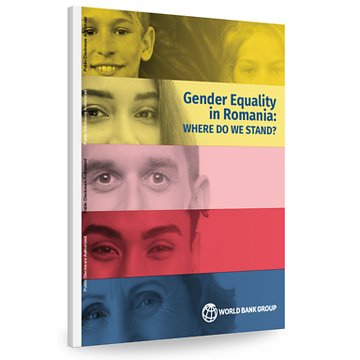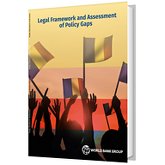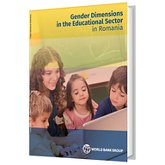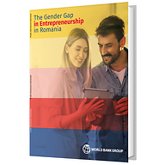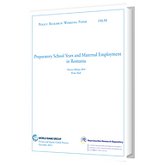Ultimately, the report aims to inform Romania’s efforts to successfully close gender gaps.
Key messages:
- Romania is the second worst-performing EU country in gender equality, according to 2022 data of the European Institute for Gender Equality. However, it has a significant potential to unlock. McKinsey estimates that eliminating gender inequality could help Romania’s economy grow by 8.7 percent (additional GDP) through 2030.
- The report identifies significant gender inequalities across several dimensions that persist in Romania, hindering progress toward other critical development goals, such as reducing poverty, improving human capital or unlocking economic opportunities for all. This is particularly important for Romania as the country that has one of the highest levels of poverty and inequality in the European Union (EU). Dimensions identified include:
- Labor market: Romania’s gender gap in labor force participation rates (LFP) is now the highest in the EU, and there are significant gaps in entrepreneurship, especially for women living in poorer households. Businesswomen are also underrepresented on the boards of the largest listed companies. Although the gender pay gap is lower than the EU average, women still earn less than men.
- Health: Women face challenges in accessing health care and experience age-related health issues for a longer period, which can impact their overall well-being and financial security. The high rates of teenage pregnancy, limited access to sex education, and restrictions on abortion rights further compound the reproductive health risks for women, as do their higher rates of unmet medical needs and affordability barriers.
- Political representation: Women’s political representation in the Romanian Parliament remains well below the EU-27 average and Romanian women remain underrepresented at the local level.
- Gender norms: More than 8 out of 10 Romanians believe that women’s primary role is to care for the home and family. This shows that gender norms about the appropriate roles of women and men in providing child- and eldercare for family members are deeply rooted in the collective conscience and thus hindering progress toward eliminating gender inequality.
- Gender-based violence: Hidden in plain sight in Romania, undocumented and invisible in the public agenda.
The report points at the education sector as one of the areas where, from a gender-equality perspective, it is important to address gender gaps for both girls and boys. The report shows that net enrollment rates in early childhood education and care services (zero- to two-years-old) are very low for both sexes in Romania. Similarly, early school leaving is a concerning trend for both girls and boys, and more acute among Roma and low-income households. While gender-related social norms could pressure men into leaving school early in rural areas, teenage pregnancy could partly explain school dropout among girls. Every individual should have the same opportunities to develop their skills, knowledge, and capabilities, regardless of their gender; hence, decision-makers should put together a comprehensive agenda that focuses on enhancing access to equal opportunities and improving outcomes for all.
The report puts forward a comprehensive set of high-level policy recommendations considering the legal and policy framework in Romania, and building on recent policies and interventions. Targeted policy areas include: the education and health sectors, unlocking economic opportunities, and enhancing voice and agency.
The report builds on the 2018 Romania Gender Assessment and is accompanied by the following thematic studies or “deep dives”:
